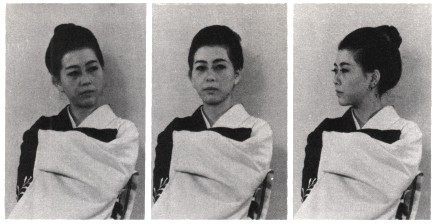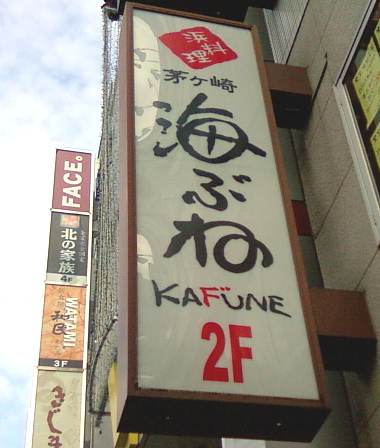That makes five men in total
À propos of nothing, I give you YAMAMOTO Hōzan 山本邦山's coolest album cover ever:
I also love this one, for entirely different reasons (hanc marginis exiguitas non caperet):
(Both images found at komuso.com, linked above.)
À propos of nothing, I give you YAMAMOTO Hōzan 山本邦山's coolest album cover ever:
I also love this one, for entirely different reasons (hanc marginis exiguitas non caperet):
(Both images found at komuso.com, linked above.)
From NAKAIMA Genkai 仲井真元楷's Okinawa kotowaza jiten (沖縄ことわざ辞典, "Dictionary of Okinawan sayings"), which I picked up in Osaka, a.k.a. the Plague Zone, over the weekend:
禽獣は殺しても食べられるが 人は殺しても食べられぬ
ichimushi-ya kuruchiN kamarii-shiga chu-ya kuruchi-ya kamaraN
"Kill an animal, and at least you can eat it; you can't eat people even if you kill them."
(Pardon my possibly misleading transcription of Nakaima's Okinawan—he provides it as furigana alongside the Japanese, but I'm not really hip to the consensus on how to romanize it.)
The intended point here, according to Nakaima, is that life is precious and human life the most precious of all. I'm just not sure that focusing on the frustration of the thwarted would-be cannibal is the best way to get this across.
The first half of "ichimushi" is cognate to Japanese iki(ru), "live," and the second half is presumably the same as the mushi that means "bug" (in both Okinawa and mainland Japan). So it seems to literally mean "living bugs", "creepy-crawlies", "quicklin' beasties", something like that. In Japanese, though, it usually gets glossed as ikimono, "living things". Lame!
Related proverb: "Stay alive long enough and you might see jellyfish bones." "Where there's life, there's hope," in other words, although the Okinawan version is much more up-front and cheerful as comforting falsehoods go.
Adapted from the Yoshiwara Tsurezuregusa:
An eight-year-old boy asked his father: "What does 'hip' mean?"
"Hip is something people get," his father replied.
"How do they get hip?"
"By acting hip."
"Who teaches them how to act hip?"
"People who have already gotten hip."
"So how did the very first hipsters get hip?"
"By spending all their money on ridiculous nonsense," the boy's father admitted.
(In the original, the part of 'hip' is played by sui 粋.)
How to look right, then straight ahead, then left, courtesy of WAKAYA[NA?]GI Takami 若柳多賀三 in her Odorikata nyūmon (踊り方入門, "How to dance: an introduction"). Remember to read right to left!

Note the slight backward head-tilt in the final stage, and of course the eyes throughout. The eyes are as crucial in old-school Japanese art-dance as they are in stage magic, and for the same reason: to help the audience relate to the goings-on on-stage in a manner entirely unsupported by the facts.
One of the several claims to fame of the man that sold me this book is having had Kawabata Yasunari's hand-written title card for the movie Snow Country, a large piece of framed calligraphy, hanging on the wall behind the counter of his store for several decades before selling it to some Kawabata museum or foundation or something.
"How did you get hold of that in the first place?" I asked the shopkeeper after he told me this story.
"That I cannot say," he replied.

Latin-alphabet text incorporating a chōonpu (vowel-elongating character) is a fairly common sight in Japan, but I think this is the first time I've ever seen a dakuten (consonant-voicing diacritic) drafted into the legion:

That's Kaf゛une, pronounced kabune. (The Japanese-script version is 海ぶね, implying "sea [i.e. fishing] boat".)
The implied chain of logic here is solid, viz.:
If ふ = /fu/
and ぶ = /bu/
and fu = /fu/
then f゛u = /bu/
Q.E.D.
